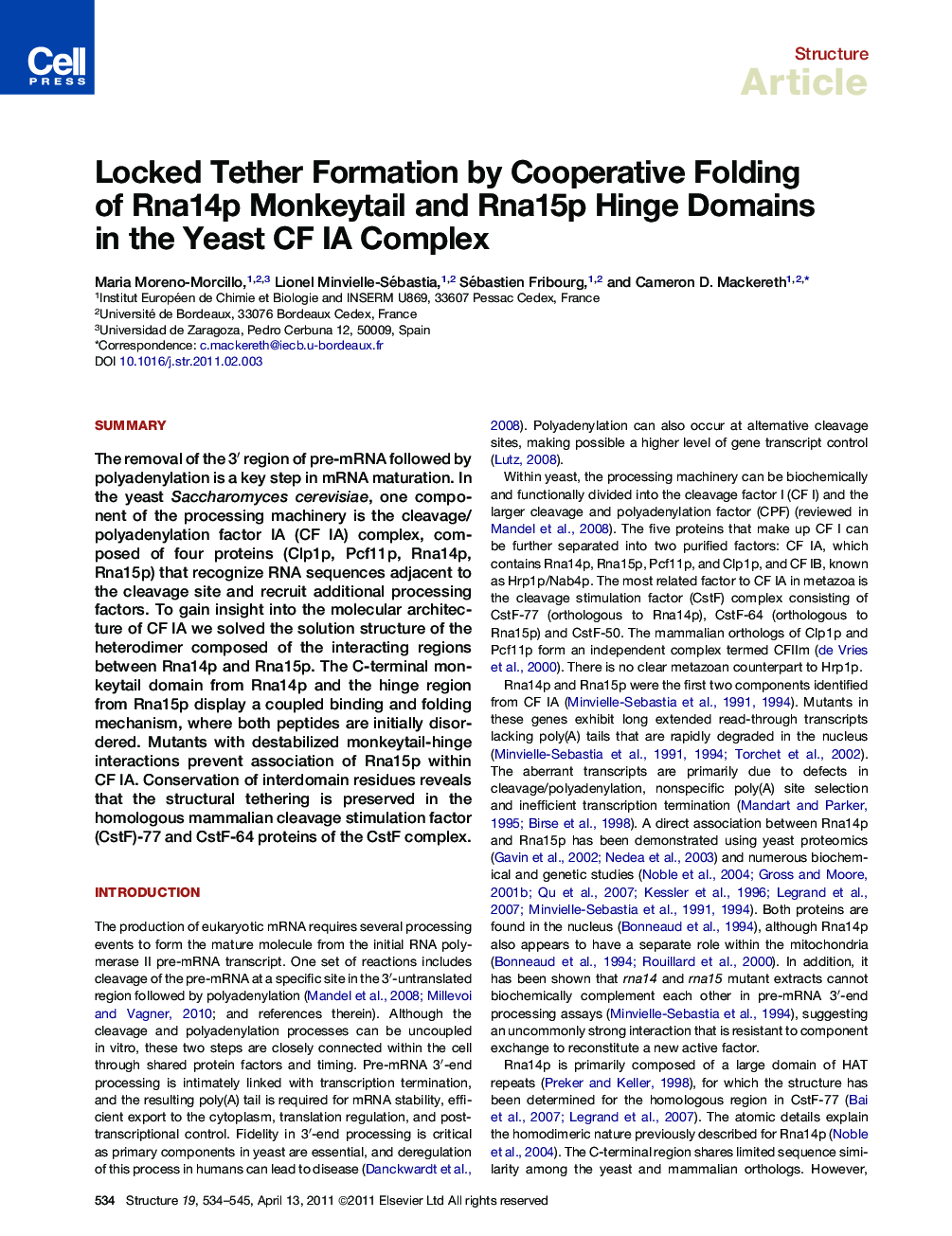| Article ID | Journal | Published Year | Pages | File Type |
|---|---|---|---|---|
| 2029877 | Structure | 2011 | 12 Pages |
SummaryThe removal of the 3′ region of pre-mRNA followed by polyadenylation is a key step in mRNA maturation. In the yeast Saccharomyces cerevisiae, one component of the processing machinery is the cleavage/polyadenylation factor IA (CF IA) complex, composed of four proteins (Clp1p, Pcf11p, Rna14p, Rna15p) that recognize RNA sequences adjacent to the cleavage site and recruit additional processing factors. To gain insight into the molecular architecture of CF IA we solved the solution structure of the heterodimer composed of the interacting regions between Rna14p and Rna15p. The C-terminal monkeytail domain from Rna14p and the hinge region from Rna15p display a coupled binding and folding mechanism, where both peptides are initially disordered. Mutants with destabilized monkeytail-hinge interactions prevent association of Rna15p within CF IA. Conservation of interdomain residues reveals that the structural tethering is preserved in the homologous mammalian cleavage stimulation factor (CstF)-77 and CstF-64 proteins of the CstF complex.
Graphical AbstractFigure optionsDownload full-size imageDownload high-quality image (202 K)Download as PowerPoint slideHighlights► Tight association by Rna15p hinge region with newly identified Rna14p monkeytail ► Bimolecular structure formed by a helical peptide within a second helical domain ► Known mutations target monkeytail or hinge regions and release Rna15p from CF IA ► Conservation of buried residues predict similar tether between CstF-77 and CstF-64
